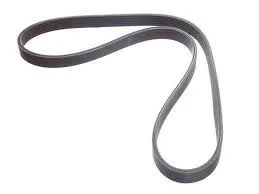- Arabic
- French
- Russian
- Spanish
- Portuguese
- Turkish
- Armenian
- English
- Albanian
- Amharic
- Azerbaijani
- Basque
- Belarusian
- Bengali
- Bosnian
- Bulgarian
- Catalan
- Cebuano
- Corsican
- Croatian
- Czech
- Danish
- Dutch
- Afrikaans
- Esperanto
- Estonian
- Finnish
- Frisian
- Galician
- Georgian
- German
- Greek
- Gujarati
- Haitian Creole
- hausa
- hawaiian
- Hebrew
- Hindi
- Miao
- Hungarian
- Icelandic
- igbo
- Indonesian
- irish
- Italian
- Japanese
- Javanese
- Kannada
- kazakh
- Khmer
- Rwandese
- Korean
- Kurdish
- Kyrgyz
- Lao
- Latin
- Latvian
- Lithuanian
- Luxembourgish
- Macedonian
- Malgashi
- Malay
- Malayalam
- Maltese
- Maori
- Marathi
- Mongolian
- Myanmar
- Nepali
- Norwegian
- Norwegian
- Occitan
- Pashto
- Persian
- Polish
- Punjabi
- Romanian
- Samoan
- Scottish Gaelic
- Serbian
- Sesotho
- Shona
- Sindhi
- Sinhala
- Slovak
- Slovenian
- Somali
- Sundanese
- Swahili
- Swedish
- Tagalog
- Tajik
- Tamil
- Tatar
- Telugu
- Thai
- Turkmen
- Ukrainian
- Urdu
- Uighur
- Uzbek
- Vietnamese
- Welsh
- Bantu
- Yiddish
- Yoruba
- Zulu
Nov . 11, 2024 21:37 Back to list
timing belt kit for honda
Timing Belt Kit for Honda Essential Maintenance for Longevity
When it comes to maintaining a Honda vehicle, one of the most critical components to pay attention to is the timing belt and its associated parts. The timing belt kit for Honda vehicles is an essential element that plays a pivotal role in the engine's performance and longevity. This article will explore the importance of the timing belt kit, signs of wear, and the proper maintenance to ensure optimal engine performance.
Understanding the Timing Belt
The timing belt is a reinforced rubber belt that synchronizes the rotation of the crankshaft and camshaft. This synchronization ensures that the engine’s valves open and close at the correct times during each cylinder’s intake and exhaust strokes. A properly functioning timing belt guarantees smooth engine operation, efficient power delivery, and reduced emissions.
Components of a Timing Belt Kit
A typical timing belt kit for Honda vehicles usually includes
1. Timing Belt The heart of the kit, this belt is responsible for the timing of the engine’s internal components. 2. Tensioner This component maintains the proper tension on the timing belt to ensure it runs smoothly. A faulty tensioner can lead to belt slippage and subsequent engine damage.
3. Idler Pulley The idler pulley guides and supports the timing belt. Like the tensioner, it is essential for maintaining belt alignment and preventing wear.
4. Water Pump (optional) In many kits, the water pump is included, as it is often located in the timing belt system. Replacing the water pump during a timing belt change can save on future labor costs, as both components share the same access area.
5. Gaskets and Seals These components are essential for preventing oil leaks and maintaining the overall integrity of the engine.
timing belt kit for honda

When to Replace the Timing Belt
Honda recommends replacing the timing belt every 60,000 to 100,000 miles, depending on the model and year. However, it’s crucial to consult the owner’s manual for the specific maintenance schedule for your vehicle. Signs that your timing belt needs replacement can include
- Visible Wear Cracks, fraying, or glazing on the belt surface. - Engine Noise Unusual noises, such as ticking or grinding, can indicate that engine components are not synchronized correctly due to a worn timing belt. - Engine Misfires If the timing belt is slipping, it can cause the engine to misfire or run rough.
Ignoring these signs can lead to severe engine damage, including valve and piston collisions, which can be catastrophic and costly to repair.
Importance of Using a Quality Timing Belt Kit
When replacing a timing belt, it’s imperative to use a high-quality timing belt kit specifically designed for your Honda model. Low-quality aftermarket parts can lead to premature wear, failure, and even engine damage. OEM (Original Equipment Manufacturer) parts are typically recommended as they are designed to meet the exact specifications of your vehicle.
The Installation Process
Replacing a timing belt can be a complex task, often requiring specialized tools and expertise. For those who are not mechanically inclined, it is highly advisable to have the installation performed by a certified mechanic. A technician will not only ensure that the timing belt is installed correctly but also check the associated components such as the tensioner and idler pulleys, replacing them as necessary.
Conclusion
The timing belt kit is a vital aspect of Honda vehicle maintenance. Regular inspection and timely replacement of the timing belt and its components can prevent potential engine failures and costly repairs. By following the manufacturer’s recommended maintenance schedule and using quality parts, Honda owners can ensure their vehicle operates smoothly and efficiently for years to come. Investing in proper maintenance not only enhances performance but also extends the life of your vehicle, providing peace of mind on the road. Remember, when in doubt, consult your owner’s manual or a professional mechanic to keep your Honda running at its best.
-
Precise Timing Belt Operation: Function & FAQ Guide
NewsAug.10,2025
-
Precision Double-Sided Toothed Endless Flat Drive Belts
NewsAug.09,2025
-
Durable Tooth Belts: Precision Power for Poly V Belt Drives
NewsAug.08,2025
-
Reliable Diesel Engine Belts & Tensioners for Optimal Performance
NewsAug.07,2025
-
23100-KVB-901 Drive Belt for Honda VARIO | OEM Performance
NewsAug.06,2025
-
Variable Belt Drive AI Optimized for Efficiency
NewsAug.05,2025

